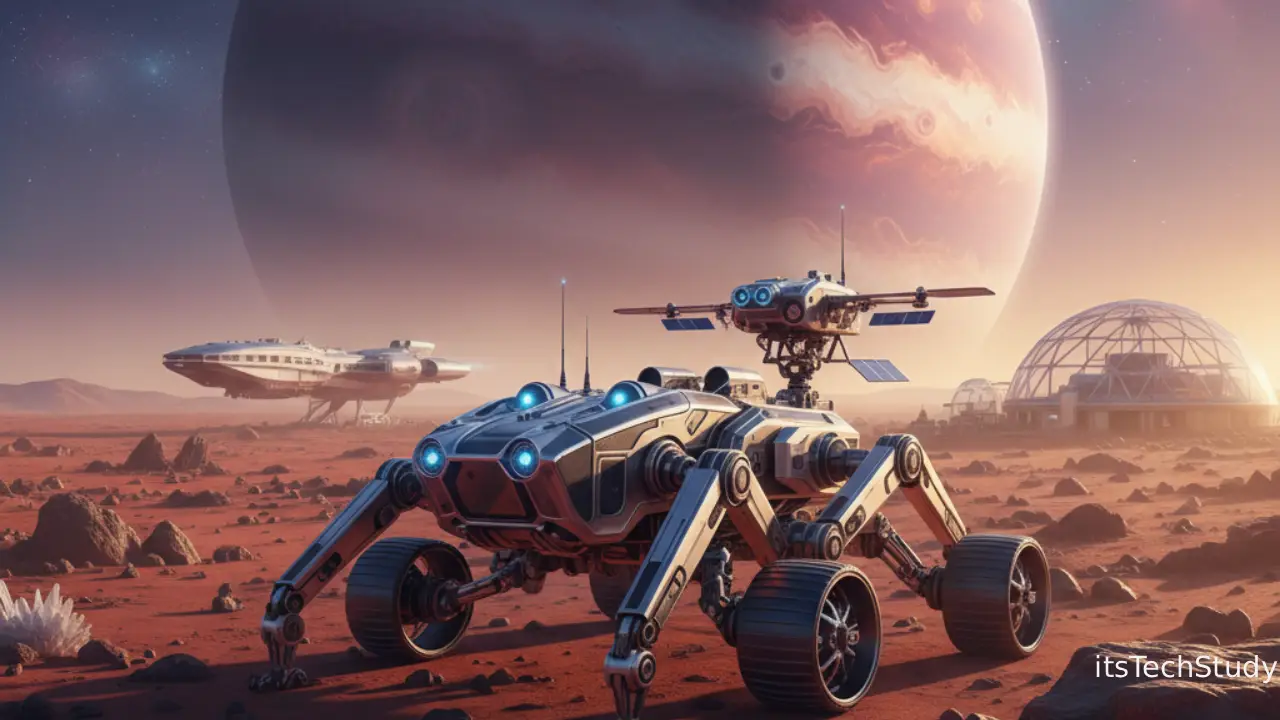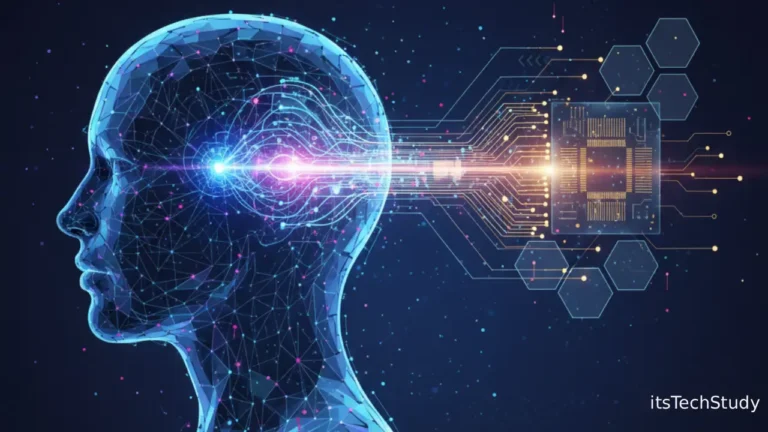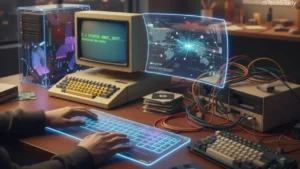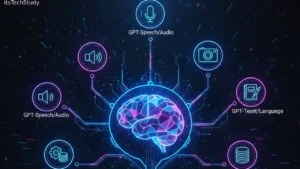Introduction: The New Frontier of Smart Space Exploration
For decades, space exploration has been humanity’s most ambitious adventure. From the first moon landing to the latest Mars missions, technology has been at the heart of every leap beyond Earth. But today, we stand at a turning point – the age of smart technology in space.
Modern space missions are no longer just about rockets and astronauts. They’re about artificial intelligence (AI), robotics, and big data analytics working together to push boundaries that once seemed unreachable. NASA, SpaceX, ESA, and other space agencies are investing heavily in technologies that can think, learn, and adapt – even millions of miles away from human control.
Yet, this transformation comes with challenges: handling massive amounts of space data, ensuring autonomous decision-making in deep space, and maintaining reliability in hostile environments. Still, the opportunities are endless – from AI-driven navigation systems to self-repairing robots that can build colonies on Mars.
This article dives deep into how smart technologies are shaping the future of space exploration, what challenges remain, and how the coming decades may redefine our place in the universe.
The Role of Technology in Modern Space Exploration
Technology has always been the backbone of space science. Early missions relied on human precision and simple onboard computers, but today’s spacecraft are smart ecosystems filled with sensors, algorithms, and data systems that learn and evolve.
The fusion of AI, robotics, and big data has made space exploration more autonomous, efficient, and data-driven than ever before.
How We Got Here
- 1950s–1970s: Manual control and basic computers supported missions like Apollo and Gemini.
- 1980s–2000s: Satellite communication and onboard systems improved reliability.
- 2010s–Present: AI, automation, and robotics revolutionized space operations.
Now, AI-powered spacecraft can adjust their own routes, robotic rovers can analyze terrain in real-time, and data analytics can predict potential mission failures before they happen.
AI in Space: The Brain of the Mission
Artificial Intelligence is no longer a futuristic concept in space – it’s already up there.
1. Autonomous Navigation and Decision-Making
Deep space missions operate far beyond the reach of immediate human communication. AI enables spacecraft to make real-time decisions without waiting for Earth’s approval.
- NASA’s Mars Rover “Perseverance” uses AI algorithms for autonomous driving and hazard avoidance.
- The European Space Agency’s (ESA) satellites use machine learning to manage energy and predict system malfunctions.
These systems save time, fuel, and resources, enabling missions to explore more efficiently.
2. AI in Data Processing
Spacecraft collect terabytes of data daily. AI tools help filter, classify, and prioritize this data, identifying the most critical findings to send back to Earth.
For instance, machine learning algorithms help scientists identify patterns in astronomical imagery, such as spotting new exoplanets or detecting cosmic phenomena.
3. Predictive Maintenance and Safety
AI predicts potential hardware failures before they occur. By analyzing system data in real-time, it can flag anomalies – preventing catastrophic failures during long missions.
Pros of AI in Space:
- Enables autonomy in remote missions
- Enhances safety and efficiency
- Accelerates data processing and insights
Cons of AI in Space:
- Requires extensive training data
- Vulnerable to algorithmic bias or errors
- Limited by onboard computing power
Robotics: The Hands and Eyes Beyond Earth
While AI acts as the brain, robotics serve as the hands and eyes of space missions.
1. Space Robotics for Exploration
Rovers like Curiosity, Perseverance, and Lunar Gateway’s future robots perform tasks impossible for humans in harsh environments. Equipped with sensors, cameras, and mechanical arms, they can traverse rough terrains, drill for samples, and even repair equipment.
2. Autonomous Maintenance and Assembly
The Canadarm2, used on the International Space Station (ISS), is a prime example of robotic excellence – it repairs modules, moves cargo, and assists astronauts during spacewalks.
Future robotic systems aim to build and maintain space structures autonomously, such as solar arrays or lunar bases.
3. Human-Robot Collaboration
With the rise of cobots (collaborative robots), astronauts can rely on robotic assistants for hazardous tasks. Robots like Astrobee on the ISS help astronauts with experiments, inspections, and logistics.
Big Data and Analytics: The Universe in Numbers
Every mission generates enormous amounts of data – from satellite images to radiation readings. Without big data analytics, this information would be nearly impossible to interpret efficiently.
1. Space Data Analysis and Insights
AI-driven analytics tools can:
- Detect climate changes from satellite imagery
- Monitor asteroid movements
- Optimize satellite trajectories
- Support planetary mapping and resource detection
For example, NASA’s Earth Observing System Data and Information System (EOSDIS) manages over 40 petabytes of satellite data, enabling climate and space research across the globe.
2. Data-Driven Decision Making
Data analytics help mission control teams make fast, informed decisions – whether predicting weather patterns for rocket launches or identifying potential landing sites on Mars.
Comparative Table: Key Technologies in Space Exploration
| Technology | Primary Function | Examples in Use | Impact |
|---|---|---|---|
| AI Systems | Autonomous decision-making, data analysis | NASA’s Perseverance, ESA satellites | Faster operations, fewer errors |
| Robotics | Physical exploration, maintenance | Canadarm2, Curiosity Rover | Reduced human risk, extended mission reach |
| Big Data Analytics | Data interpretation and prediction | NASA EOSDIS, SpaceX telemetry | Enhanced insights, smarter planning |
| 3D Printing & Manufacturing | On-site construction | Made In Space project | Reduced payload cost, self-sustainability |
Smart Technologies Enabling Future Missions
1. 3D Printing and Additive Manufacturing
3D printing enables astronauts to manufacture tools, parts, or even habitats using local resources on the Moon or Mars. This reduces dependence on Earth-based resupply missions.
2. Internet of Space Things (IoST)
Similar to IoT on Earth, IoST connects satellites, spacecraft, and robotic systems into a data-sharing network, improving coordination and efficiency across space missions.
3. Quantum Computing and Communication
Quantum technology promises ultra-secure data transmission and powerful computation for solving complex astrophysical models, making deep-space communication faster and safer.
The Benefits and Challenges of Smart Space Technologies
Advantages:
- Autonomy: Reduced reliance on Earth-based control.
- Efficiency: Faster data analysis and mission decisions.
- Safety: Robots can replace humans in dangerous environments.
- Innovation: Enables continuous technological improvement.
Challenges:
- High Cost: Developing AI and robotics for space is expensive.
- Reliability: Systems must withstand extreme conditions.
- Ethical and Operational Risks: AI errors in autonomous missions could have major consequences.
- Data Overload: Managing massive space datasets remains a bottleneck.
What Lies Ahead: AI, Robots, and Data Beyond Earth
Future missions will be smart, self-sustaining, and data-centric. Here’s what the next decade may hold:
- AI-driven Mars colonies: Autonomous construction, resource mining, and life-support management.
- Interplanetary internet: Powered by quantum and IoST systems for seamless communication.
- Swarm robotics: Multiple robots working together for planetary exploration.
- Self-learning satellites: AI systems that adapt to space conditions over time.
The fusion of AI, robotics, and data analytics is paving the way for a fully autonomous era of exploration, where machines and humans collaborate seamlessly to extend our reach across the cosmos.
Conclusion: A Smarter, Bolder Space Future
Space exploration has entered a new chapter – one powered not just by rockets, but by intelligence. The combination of AI, robotics, and data is redefining what’s possible, from autonomous spacecraft to predictive mission control.
As technology continues to evolve, humanity’s ability to explore, analyze, and even inhabit new worlds will become increasingly achievable. The universe is vast, but with smart tech on our side, the distance between imagination and reality is shrinking every day.
Frequently Asked Questions (FAQs)
Q1: How is AI used in space exploration today?
Ans: AI helps spacecraft navigate, analyze data, and make real-time decisions. For instance, the Mars rovers use AI to plan routes and avoid hazards without constant human intervention.
Q2: What role do robots play in space missions?
Ans: Robots perform exploration, maintenance, and assembly tasks in environments unsafe for humans. They help build space stations, explore planetary surfaces, and even assist astronauts in zero gravity.
Q3: How is data analytics improving space missions?
Ans: Data analytics enables faster interpretation of massive datasets from satellites and spacecraft, helping scientists make better decisions regarding mission planning and discovery.
Q4: Can smart technologies reduce space mission costs?
Ans: Yes. Automation and robotics can minimize human risk and resupply needs, making missions more cost-effective and sustainable in the long term.
Q5: What are the biggest challenges in using AI in space?
Ans: Limited computing power, unpredictable environments, and communication delays are major challenges. AI must operate independently and reliably under extreme conditions.
Q6: What is the future of smart technology in space?
Ans: Future missions will rely on self-learning AI, swarm robotics, and data-driven insights to build colonies, explore distant worlds, and ensure sustainability in space.












No Comments Yet
Be the first to share your thoughts.
Leave a Comment